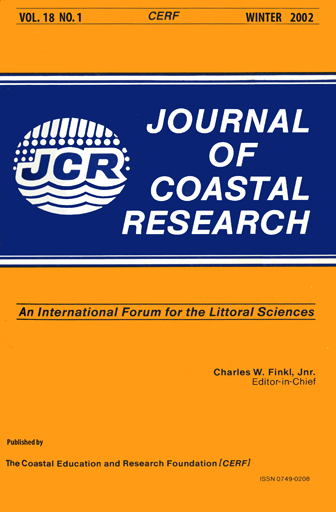The Rhone River Prodelta
Keywords:
Rhone River, prodelta, human impact, laminite, 210Pb, deforestation, microtidalAbstract
The Rhone River Prodelta: Short-Term (100-103 Year) Sedimentation Patterns and Human Impact
We compared various data sets obtained on the Rhone River delta and the adjacent land over the past 1000 years. Data sources were historical documentation and quantitative results. The period of the Rhone d'Ulmet (before 1300 y. A.D.) corresponds to the north-western position of the river mouth and to climatic and runoff variations of low magnitude. In the prodelta area, mottled muds are common and laminated muds were not observed due to the distance of collected data from the mouth. The "wild" Rhone period from 1587 to 1869 y. A.D. (Bras de Fer and Grand Rhone mouths) shows a dramatic extent (7-8 km distance) of laminated muds resulting from seasonal floods. Changes in climatic conditions probably modified the watershed and played a prominent part in the prodelta development. During this period, pedogenic ochre aggregates were reworked from swamp soils of the delta during channel migrations. In all our cores, the top of laminated muds coincides with the disappearance of the ochre aggregates. The Recent period of the Rhone channeling began with the 1869 rectification which fixed the main channel. The consequence was a drastic reduction of laminated muds to a 3-4 km proximal area off the stabilized mouth. With a decrease in flood supply and a longer time of exposure, we can observe a coarsening trend in the upper part of the cores as a result of repetitive reworking processes. The seasonal build-up of laminites is altered seaward: faintly laminated muds and mottled muds deposition shifted with increasing distance from the river mouth. Markers of the anthropogenic pollution, such as metallurgic microballs (Fe sulfides) and talc characterized the upper third of the cores.
A variety of previous sedimentological data and 210Pb and 137Cs age estimates indicate very fast sediment accumulation rates in the proximal Rhone prodelta (30-40 cm y ) which would be regarded as apparent rates. Detailed investigation of the gravity cores located off the Rhone River mouth showed marked coarsening-upward trends (condensed section), clast deposition, and truncated structures that indicate the processes of sea floor erosion and reworking.
On the distal Rhone prodelta, a thin recent veneer overlies the Holocene tract of the initial transgression and indicates a hiatus of ≈5-6000 y. Decreased discharge and reworking have been especially obvious since 1950, resulting from both the developing hydroelectric catchment and the decrease in winter rainfall.


